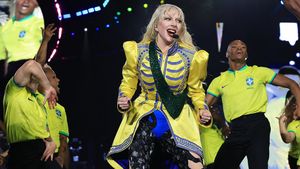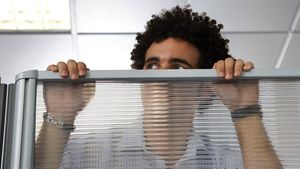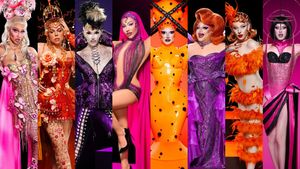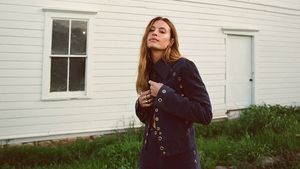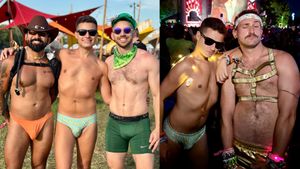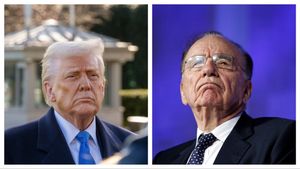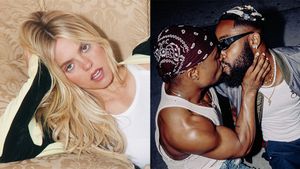Editor's note: Holly Thomas is a writer and editor based in London. She is morning editor at Katie Couric Media. She tweets @HolstaT. The opinions expressed in this commentary are solely those of the author. View more opinion on CNN.
(CNN) — Adolescents’ enthusiasm for beauty products is nothing new. Indeed, we’ve long taken it for granted. When I was about 12, I received a large — unsolicited — Estee Launder makeup sampler for Christmas. The box felt like a totem of my impending maturity, recognition that I would soon be allowed access to an as-yet out-of-reach club. I gave it pride of place on my bedroom table (swiftly rebranded as a “dresser” with the help of a soon-to-be filthy sarong), and before too long I was regularly being sent out of class, cheeks burning, to wash my contraband mascara off.
It wasn’t a particularly edifying phase, but neither was it very consequential. Today however, skin care is a far more serious business. Gone are the days of teens aimlessly browsing random drugstores by day and smudging their pillows with iridescent bronzer by night. Now, kids don’t just know how to cleanse properly, they’ve taken to beauty products with unprecedented zeal. Absurd though it sounds, that fervor is acutely ominous.
The closer you look at the teen (and even tween) skin care craze, the more blemishes appear. Dermatologists report children as young as nine, many of whom already maintain elaborate at-home skin care regimes coming to their offices for cosmetic consultations. Teens who’ve barely exited puberty are obsessing over the alleged “preventative” anti-aging properties of Botox, and the internet is teeming with youngsters pleading for solutions to their “wrinkles.” The fretting and groupthink involved bear all the hallmarks of a classic youthful infatuation. But this one comes with sinister undercurrents less familiar to the adults who went before them.
To borrow some popular advertising parlance, this generation’s relationship with beauty appears to be deeper, firmer and potentially longer-lasting. The prevailing trends (“dolphin skin,” “glass skin,” donut-glazed”) all confer images of poreless, ready-filtered complexions that are unfeasible for almost everyone, but require endless products to attempt. The modern rebranding of “beauty products” to “skin care” - reminiscent of that of “diets” to “lifestyles”- implies that simply leaving your skin alone is tantamount to negligence. As though in answer to the call, Gen Z is dropping more cash on skin care than any other age group, according to a recent study. In 2023 alone, spending by tweens and teens leaped by 20%. For those on the younger end of the spectrum, dermatologists warn this could be doing their faces more harm than good.
Adult products boasting “antiaging, tightening, wrinkle-reducing, brightening and firming” effects are likely to include ingredients unsuitable for kids’ more delicate skin, which is yet to form the protective barriers necessary to handle them. Teens may develop allergies to some ingredients, or aggravate hormonal acne that’d be more appropriately treated by a doctor.
Amplifying young people’s insecurities and selling them expensive, potentially damaging “fixes” feels especially pernicious at a time when adolescent girls are reporting record levels of sadness. But the erosion of traditional media has young people turning to evermore spurious sources for advice on how to proceed.
The hashtag #skincareroutine on TikTok has 77.3 billion views, and #preventativebotox has 59.7 million. All the time, younger and younger influencers are hopping aboard to share their “anti-aging” secrets. In a since-deleted video, one 14-year-old rattled off her daily routine, which includes (but isn’t limited to): double-cleansing, toner, vitamin C serum, glycolic acid, salicylic acid, two different types of moisturizer and a drink of green tea to slow down “the aging process.” “I started doing most of these things at 12,” she told her thousands of followers.
Though the industry’s marketing has been quick to pivot to younger audiences, prices remain decidedly grown-up. In 2020, clinical skin care brand Murad enlisted high-school influencers to promote its rejuvenating serums on Instagram. The “Retinol Youth Renewal Night Cream” touted by the creator Nil Sani costs $89. In 2022, Spoiled Child, a brand associated with Gen Z, launched an anti-aging campaign with the barefaced tagline “Getting old is getting old.” Their “K-27 Anti-Aging Vitamin C Boosting Serum,” which comes in a shiny blue capsule redolent of a fancy vibrator, costs $58.
Considering how many such products tend to feature in the average online skin care routine, the potential cost overall is breathtaking. The financial pressure this puts on kids vying to keep up — and on the parents who often foot the bill — reinforces the potential for dissatisfaction. The more someone spends on a serum or elixir, the better the results they expect. After a certain point, anything less than perfect is disappointing. And perfection, as we all discover in time, is unattainable.
The beauty and skin care ecosystem kids are entering nowadays is completely different from that of even a decade or so ago. It comes with a dubious new sense of obligation (“skin care is self-care!”), and an aesthetic standard that seems engineered to be forever out of reach.
“Preventative” anti-aging is a perfect ruse for companies willing to prey on youthful insecurities. There’s no way of knowing what you’d have looked like if you hadn’t used the products, but you can certainly assume you’d look worse if you stopped. Once teens get a little older, an additional world of non-surgical procedures becomes available to them, the cost of which can run into the thousands.
Until just a few years ago, parents’ main beauty-related concern was that their kids might go out wearing “too much” makeup. When I was growing up I experimented, with minimal investment, and then I moved on. That’s how it should be. The most worrying thing about today’s skin care craze isn’t just that the financial and emotional buy-in are completely out of proportion to the “need” being addressed. They may set kids up for lasting damage. And thanks to the misinformation soup of social media, the gnarly, anxiety-provoking call is coming from inside the house.
The-CNN-Wire
™ & © 2024 Cable News Network, Inc., a Warner Bros. Discovery Company. All rights reserved.
Heidi Clements on Hollywood's fear of aging women

Video Source: Advocate Channel







